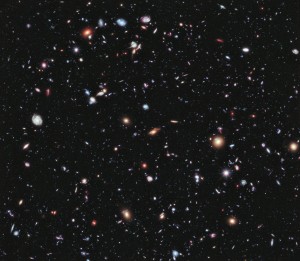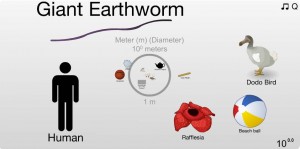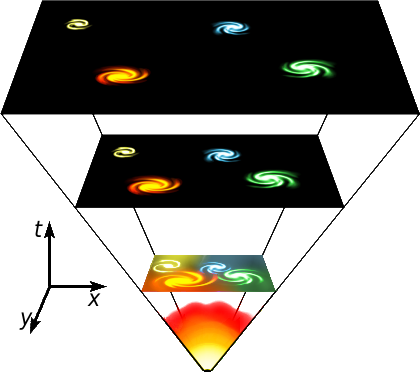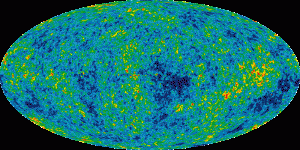The universe is the place that our planet Earth lives in, including the sun, all the planets, stars and galaxies. It’s everything that we can see with a telescope or the naked eye by looking up in the sky.

How big is the Universe?
As far as we can see, the universe is about 93 billion light years wide (diameter) – really big! That means it would take a beam of light 93 billion years to go from one end to the other – and light travels at about 186,000 miles per second!
In fact, because light takes a long time to travel from one end to the other, when you look up at the stars in the night sky you are actually looking at an image of the past! At night the nearest star to earth other (other than our sun) is Alpha Centauri which is 4.3 light years away, so we’re actually looking at stuff from years ago.
The image to the above/right is Hubble’s Deepest Field, showing many galaxies from a small patch of our night sky – but the galaxies are billions of light years away and so we’re looking at what those galaxies looked like billions of years ago. It even takes about 8 minutes for light to leave our sun to reach Earth, so if the sun ever ran out of fuel one day we wouldn’t know it for a few minutes.
Try playing around with the Scale of the Universe demo, it’s pretty mind blowing to see how small things get and then how far out you can scale!

Where did the Universe come from?
Scientists think the Universe came from a single point also known as a singularity about 13.7 billion years ago. That single point expanded very rapidly as what’s known as the “Big Bang” where all matter and energy exploded into existence.

Even today we can still see the background radiation left over from the big bang in the image below.

There is no proof yet of what cause the big bang. It might be God or maybe not. But it is thought among many scientists is the very fabric of the universe itself spontaneously gave the big bang it’s starting point. Quantumm mechanics tells us that sub atomic particles can spring into and out of existence, and that it happens all the time. If a small particle can appear then why can’t multiple particles do that and enough to fill our universe with?
What came before the Big Bang?
No one really knows what came before the Big Bang. Some scientists think time itself didn’t even exist before the Big Bang! To illustrate, think of the beginning of time like the north pole of planet Earth. If you try to go north of the north pole you can’t simply because there is nothing north of the north pole. Think of time is like a spacial dimension, almost like the surface of a sphere where there is no beginning or end.
How will the Universe end?
Again, no one really knows for sure how the Universe will end. But the most popular idea is that all matter in the universe will eventually spread out and expand to a point where galaxies and even stars and planets won’t exist and everything reaches absolute zero temperature, called the “Big Freeze”. Almost like nothing again!
Another theory suggest that all matter might someday contract and end up in a “Big Crunch” or compress down to a singularity. Yet another one says that all particles (atoms) will be torn apart in a “Big Rip” and nothing will survive in the end.
Don’t worry though, it will likely be many billions if not trillions of years before our Universe ends. So we still have some time to think it over 🙂
